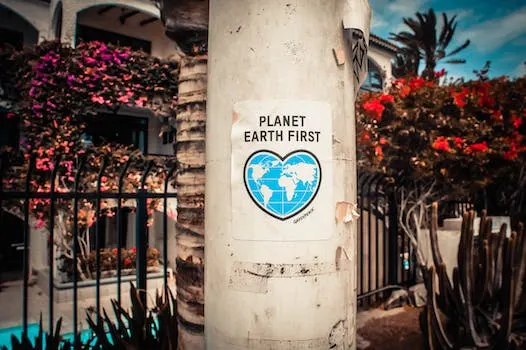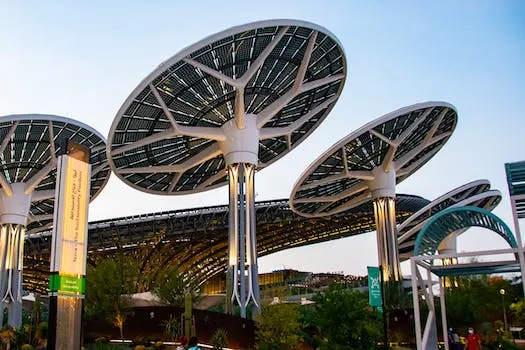
The Pros and Cons of Conspicuous Conservation
In recent years, the concept of conspicuous conservation has become increasingly popular among consumers. This trend involves people paying a premium for eco-friendly products in order to signal their higher social status. But what are the pros and cons of this practice? In this article, we will explore the potential benefits and drawbacks of conspicuous conservation and its implications for consumer behavior in the future.
Conspicuous conservation is based on semiotics, which is the study of signs and symbols that convey meaning. It enables purchasers to signal their willingness to sacrifice in order to enhance the environment, thus demonstrating their commitment to sustainability. This concept has been gaining traction in both high-end luxury markets as well as everyday consumer goods markets due to its ability to provide a sense of status or reputation associated with being environmentally conscious.
The literature so far has focused on how these nontraditional status signals can influence consumer behavior when it comes to Sustainable practices such as recycling or reducing energy consumption. Studies have shown that consumers are more likely engage in sustainable behaviors when they perceive them as having a positive effect on their social standing or reputation within society. Additionally, research suggests that people are more likely purchase eco-friendly products if they believe it will increase their perceived value among peers or colleagues.
Consumer Social Responsibility (CSR) is an important factor when considering Conspicuous conservation because it involves producers, governments and consumers all working together towards achieving sustainability goals through responsible production methods and consumption habits respectively. CSR also encourages companies to be transparent about their environmental impact by providing detailed information about how they produce goods sustainably while also educating customers about how they can reduce waste through conscious consumption habits such as buying secondhand items instead of new ones whenever possible .
In conclusion, while there are some potential benefits associated with conspicuous conservation such as increased awareness around sustainability issues amongst consumers, there are also some drawbacks including increased costs for eco-friendly products which may not be accessible for everyone regardless of income level . Ultimately , it is up to each individual person decide whether or not engaging in this type of behavior is worth it from both an economic standpoint and an environmental one .
The Pros of Conspicuous Conservation
The primary benefit of conspicuous conservation is that it encourages people to purchase eco-friendly products. By making eco-friendly products more desirable and fashionable, consumers are more likely to buy and use them, leading to a decrease in overall environmental impact. This shift in consumer behavior has been seen globally, with 85 percent of people indicating that they have shifted their purchase behavior towards being more sustainable in the past five years. Additionally, as people become more aware of the environmental benefits of these products, they are more likely to continue to purchase them, furthering their environmental impact.
Another advantage of conspicuous conservation is that it can lead to increased innovation in the eco-friendly product market. Companies are incentivized by consumers who are willing to pay a premium for environmentally-friendly products and services; this can lead to higher-quality green products and services which further encourage people's purchasing decisions. To make sustainable product or behaviors socially desirable and buffer against potential negative perceptions linked with green purchases, companies must focus on creating aesthetically pleasing options which match consumer expectations for quality while still being climate friendly.
However, our intention does not always match our buying behaviour when it comes to climate friendly options - especially when we pay more for such items - so companies must also consider how they can make these items accessible at an affordable price point without sacrificing quality or sustainability standards. During the pandemic especially, people have become increasingly sensitive about the environmental impact of their shopping decisions; this means companies must be mindful about how they market their green offerings if they want customers' attention and loyalty over time. Green purchase refers specifically to activities conducted by consumers which save resources and protect the environment; this includes buying recycled materials or energy efficient appliances as well as opting for digital alternatives instead of physical goods whenever possible.
The Cons of Conspicuous Conservation
The Cons of Conspicuous Conservation: One potential downside of conspicuous conservation is that it can lead to an increase in consumerism. As people become more aware of the environmental benefits of eco-friendly products, they may be more willing to purchase them, even if they do not necessarily need them. This could have a negative impact on the environment as consumption increases. Additionally, conspicuous conservation can lead to a decrease in the overall quality of eco-friendly products. Companies may be incentivized to produce more eco-friendly products but cut corners in order to reduce costs and increase profits, resulting in lower-quality items that are not as effective at reducing environmental impact.
Another issue with conspicuous conservation is that consumers often have negative associations with sustainable product options, viewing them as being of lower quality and less aesthetically pleasing than their conventional counterparts. This perception can make it difficult for companies to market sustainable products effectively and encourage people to buy them instead of traditional ones. We argue that buying such products can be construed as altruistic since green products often cost more and are usually lower quality than their conventional counterparts; however, survey respondents cite other reasons for not choosing sustainable options such as lack of quality, limited product availability, and lack of time when making purchasing decisions.
We define sustainable consumer behavior as actions that result in decreases in adverse environmental impacts while also decreasing utilization of natural resources; however new research suggests consumers don't reflexively distrust the performance or efficacy these types of goods offer when compared with traditional ones. For instance, if you want to reduce your ecological footprint by reducing red meat consumption you might decide buying organic vegetables or plant-based proteins is a better option than purchasing conventionally produced food items which require higher levels energy input during production processes leading greater emissions output into atmosphere from manufacturing facilities . Ultimately this type behavior helps conserve resources while also helping protect environment from further damage caused by human activities .
Conclusion
In conclusion, conspicuous conservation can be a beneficial trend, as it encourages people to purchase eco-friendly products and services. However, it is important to be aware of the potential drawbacks of this trend such as an increase in consumerism and a decrease in the quality of eco-friendly products. To combat these issues, consumers should consider reducing or simplifying their consumption and look for green product options that are reasonably priced. Additionally, companies should strive to make sustainable products more aesthetically pleasing and accessible so that they become more attractive to consumers. Finally, education on environmentally sustainable food consumption patterns is essential for creating lasting change in consumer behavior. By being mindful of these considerations when making purchasing decisions, we can work towards a more sustainable future.










